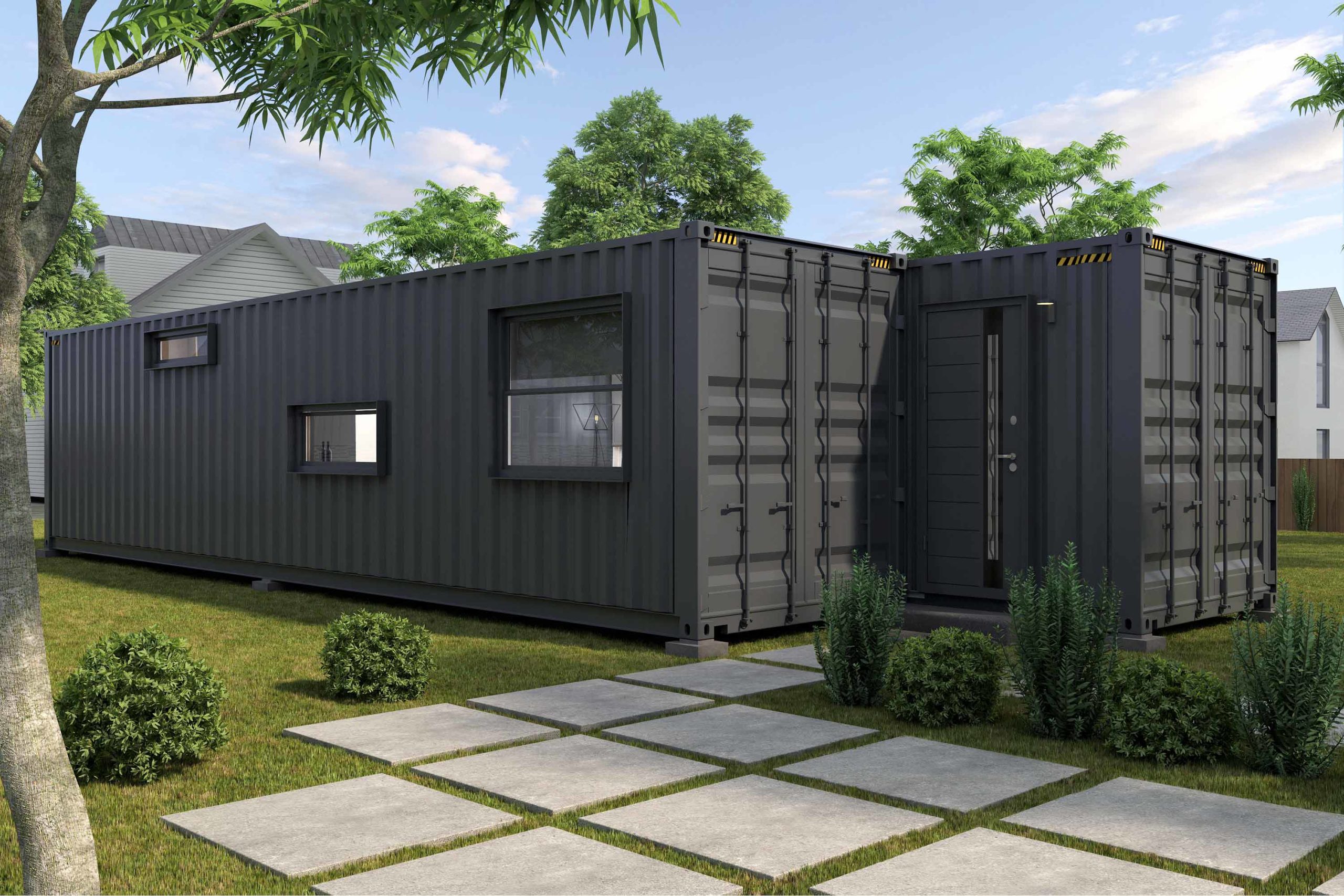When people envision the off-grid lifestyle, they might focus on the obvious pleasures that shipping container homes can offer in comparison to traditional homes. For some, these houses offer a cosy, stripped-back space free of distractions — a sanctuary that allows them to drift off to the music of birdsong or the gentle drumming of rain on steel. For others, they might offer a sprawling living space with a community vibe — home to a barbecue and bar for special occasions with loved ones as the sun sets in the distance.
As anyone who has ever made a life-changing investment will attest, after the initial stirring of the idea comes the pragmatism. In the case of shipping container homes, the practical questions might include; ‘How are they made?’, ‘How much do they cost? ‘Where can I put them?’ And, perhaps most importantly, ‘Are they safe?’ It’s natural to ask these questions. In fact it’s a healthy sign that you’re not taking a big decision lightly.
Therefore, let’s have a look at the reasons for converting shipping containers into homes. Along the way, we’ll address some practicalities that could stand between you and a nourishing new life. From safety to regulations, let’s examine the main questions for people who are feeling the pull of a return to nature but want to know a bit more first.
Why Convert a Shipping Container into a Home?
Shipping container homes are the perfect option for people who want to combine the bespoke comforts of traditional housing with the transportability of a caravan. The desire to trade the expense, excess and rigidity of conventional living spaces for a secluded hideaway at the heart of nature is so compelling that growing numbers of people have already taken the plunge. However, everyone is different, so the reasons for adopting this bold new lifestyle are highly personal.
For some, the most appealing aspect of shipping container homes is their cost-effectiveness. Not only are they constructed at a fraction of the price of typical residences but they can also be customised to harness the economical and eco-friendly benefits of renewable energies like solar panels and rainwater collectors. For people who value sustainability it’s easy to see why shipping container homes are such a big draw. At a time when the climate crisis is a pressing issue, giving a second life to an existing material, while also trading fossil fuels for renewables, not only reduces construction costs but also leaves a much smaller carbon footprint.
Ultimately, a shipping container home can be anything you want it to be. If you’re looking for a compact, eco-friendly sanctuary, you’ve got it. If you want a complex masterpiece made out of several interlocked containers, you can have that too. There are no limits.
How Safe are Shipping Container Homes?
Shipping container homes are built using steel, making them durable and extremely tough. As former cargo carriers, they are built to withstand the most extreme weather conditions. Meanwhile, on the inside, the best prefabricated homes are secure, structurally sound and well-insulated. Ultimately, shipping container homes could be expected to pass the same rigorous building regulations as a traditional house.
With global weather conditions becoming increasingly extreme, what better material could you use to make a home than ultra-sturdy steel? Shipping containers are able to withstand wind speeds of up to 180mph, making them more than a match for anything Mother Nature can throw at them. They’re also built to last, with some estimates suggesting they can last for over 30 years.
For the security-conscious, these upcycled modular homes are almost impenetrable fortresses. When created by a professional company, the structural integrity of the walls won’t be compromised by the need to cut out and install windows and doors. If you want added security, those cut outs can be made more secure with additional locks and security features.
If you want to strike a balance between freedom, style, customisation and safety, shipping containers are an absolutely ideal solution.
Building Regulations for Shipping Container Homes
Ordinarily, shipping containers won’t need to comply with planning permissions and building regulations. As temporary structures, much of their appeal comes from how easily they can be moved, both as a form of housing and as a business (such as cafes and restaurants). This means that planning permission is rarely needed. However, there are exceptions to where you can keep them, which includes areas of outstanding natural beauty or in close proximity to listed buildings.
Building regulations for shipping containers are relatively simple. Essentially, when used as living or working spaces they need to meet building codes to ensure that they’re safe, comfortable and energy efficient. Prefabricated shipping containers are built to a very high standard and have all the same safety features you would associate with traditional homes.
However, if you’re building your own shipping container home or business, you’ll need to satisfy those regulations yourself, to ensure the safety of you and/or your customers. If you’re designing your own shipping container living space you should speak to your local council’s Building Control department about the necessary building regulations in advance.
The last thing you’d want is to reach the end of your project only to find that you’ve overlooked an essential step.
To read more about building regulations and planning permission check out our blog here.
Safe as Modular Houses
It can be easy to get swept away by the allure of a shipping container home without considering practical matters like safety and security. The pull of the open road and a dream home of your own design is often all it takes to get people half way towards putting down a deposit. And that’s before considering the additional benefits of reduced costs, cheaper bills, and a more sustainable — greener – lifestyle.
But these versatile houses prove that high-concept doesn’t need to come at the expense of low safety or security. Not only are shipping container homes arguably more secure than more common building materials, they’re also extremely safe and practically impervious to the elements.
If you’ve ever wondered if there was a better life out there — something closer to nature and removed from traffic jams and the 9 to 5 — then this is what you’ve been looking for. It’s time to embrace the future of a life off grid.
For more information please contact us at [email protected] today.









